Congratulations to Hang for winning the 2023 Denis Vezina Scholarship as the top graduate student in the Faculty of Science at the University of Ottawa. Well deserved!
Pamenter lab featured in the winter issue of BioMatters
Check out the feature on our research in the winter issues of BioMatters!
https://indd.adobe.com/view/75ef4c78-46bc-4ac1-aafc-692a31d046f3
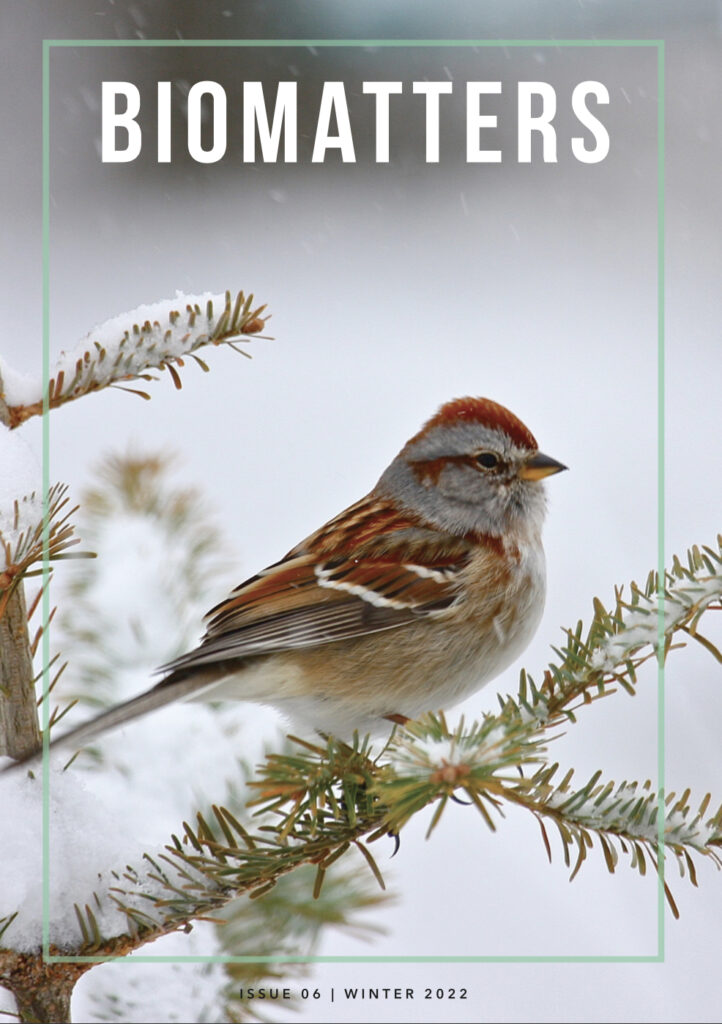
New feature in the Ottawa Citizen
Check out this recent article about our work in the Ottawa Citizen:
Always flattering to have one’s picture under a headline that says “ugly but gifted”!
New paper in Nature Communications elucidates how naked mole-rats turn off thermoregulation to save energy in hypoxia
I’m excited to announce our latest publication, which details how naked mole-rats turn off non-shivering thermogenesis in intrascapular brown adipose tissue to save energy in hypoxia. Our study demonstrates that not only are naked mole-rats heterothermic, but that they can rapidly modulate heat production in hypoxia via a novel mechanism that decreases expression of the key thermogenic protein UCP1. Furthermore, similar changes were observed in other social mole-rat species but not a solitary species, suggesting this adaptation may have evolved preferentially in social rodents.
This work was funded by a National Geographic Explorers Grant and was the result of an exciting collaboration with Dr. Nigel Bennett of the University of Pretoria, Glenn Tattersall of Brock University, and Mary-Ellen Harper and Baptiste Lacoste of uOttawa.
Read the full study here: https://rdcu.be/cBR7d
Read a commentary here:
https://tattersalllab.com/2021/11/24/naked-mole-rats-rapidly-decrease-ucp1-in-hypoxia/
Read some press coverage here:
https://thefulcrum.ca/sciencetech/u-of-o-professor-studies-hypoxia-tolerance-in-naked-mole-rats/
https://floridanewstimes.com/the-naked-mole-rat-may-provide-the-secret-of-hypoxic-survival/382511/
https://medicalxpress.com/visualstories/2021-11-hypoxia-tolerance-naked-mole-rats-secret.amp
Modest mole-rats
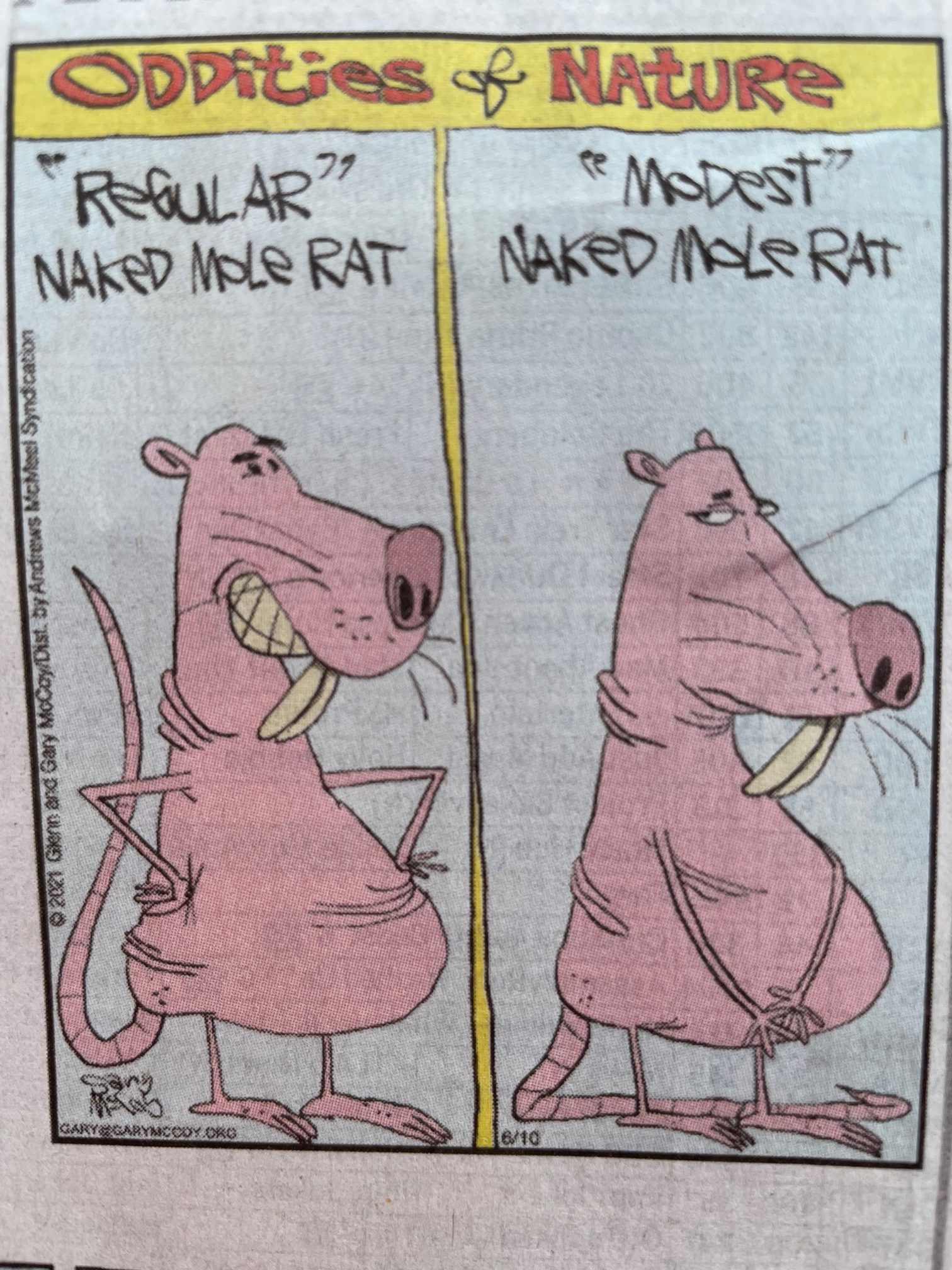
Mohammad wins a Special Scholarship
Congratulations to Mo, who was just awarded a Special Scholarship from the Faculty of Science. This 3-year award recognizes Mo’s accomplishments during his MSc and his promise as a PhD candidate. Currently, Mo is exploring the regulation of glucose signalling during hypoxia in naked mole-rats.
New review in Aging Cell
Congrats to Dan for publishing an excellent review regarding the pitfalls and potentials of comparative studies of aging in Aging Cell!
CSZ2019 – Windsor
Last week the lab attended the annual meeting of the Canadian Society of Zoologists in sunny Windsor, Ontario. Six team members gave excellent presentations, highlighted by Dan’s participation in the President’s award competition and Kenny’s poster competing for the Holeton Award. Great job everyone!!
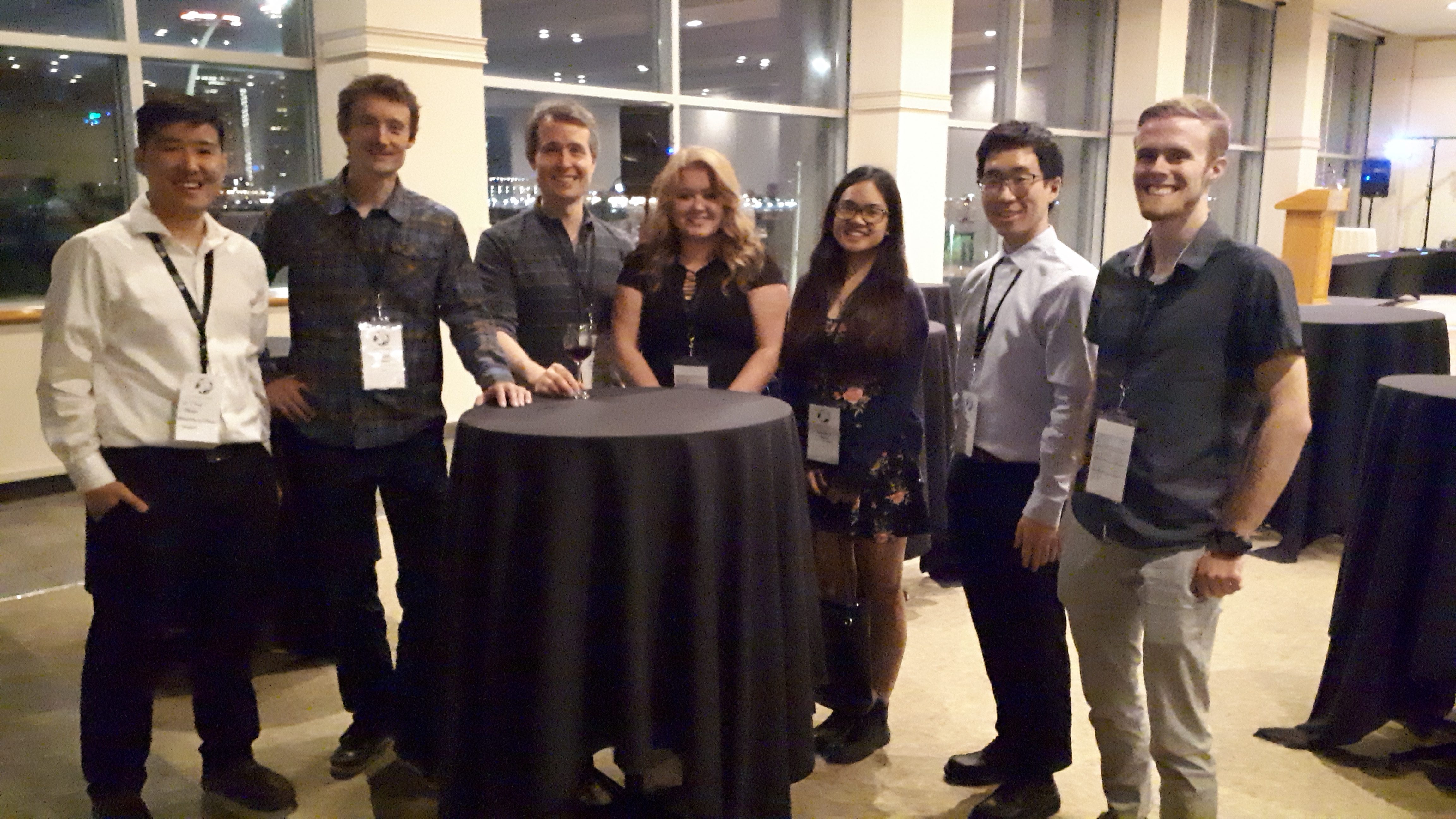
Great job Maiah, Salome, Sam, and Tina!
Congratulations to this years’ honours theses students who presented a suite of fantastic posters at the annual BIM thesis poster day today. Great work folks!!!

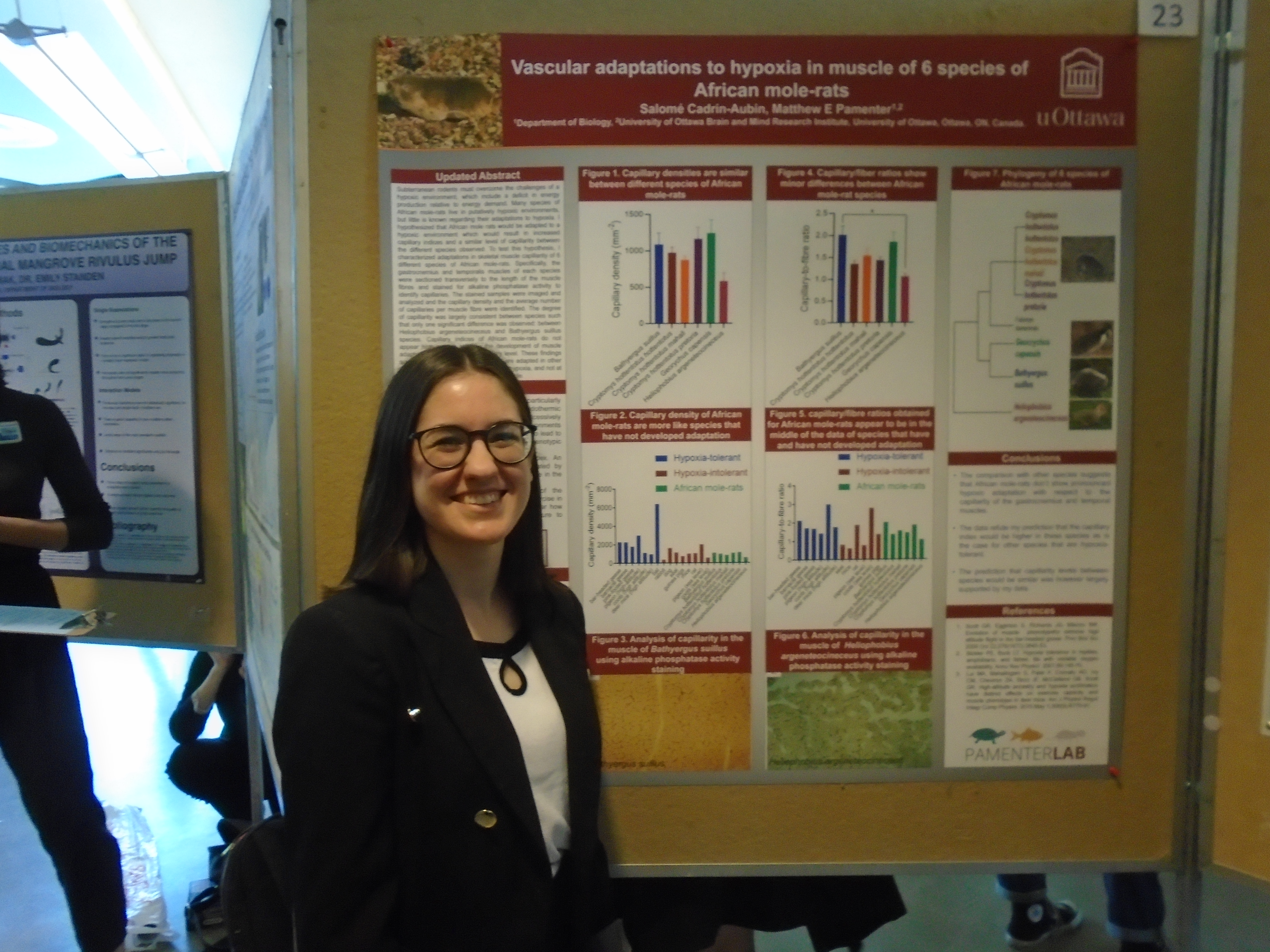
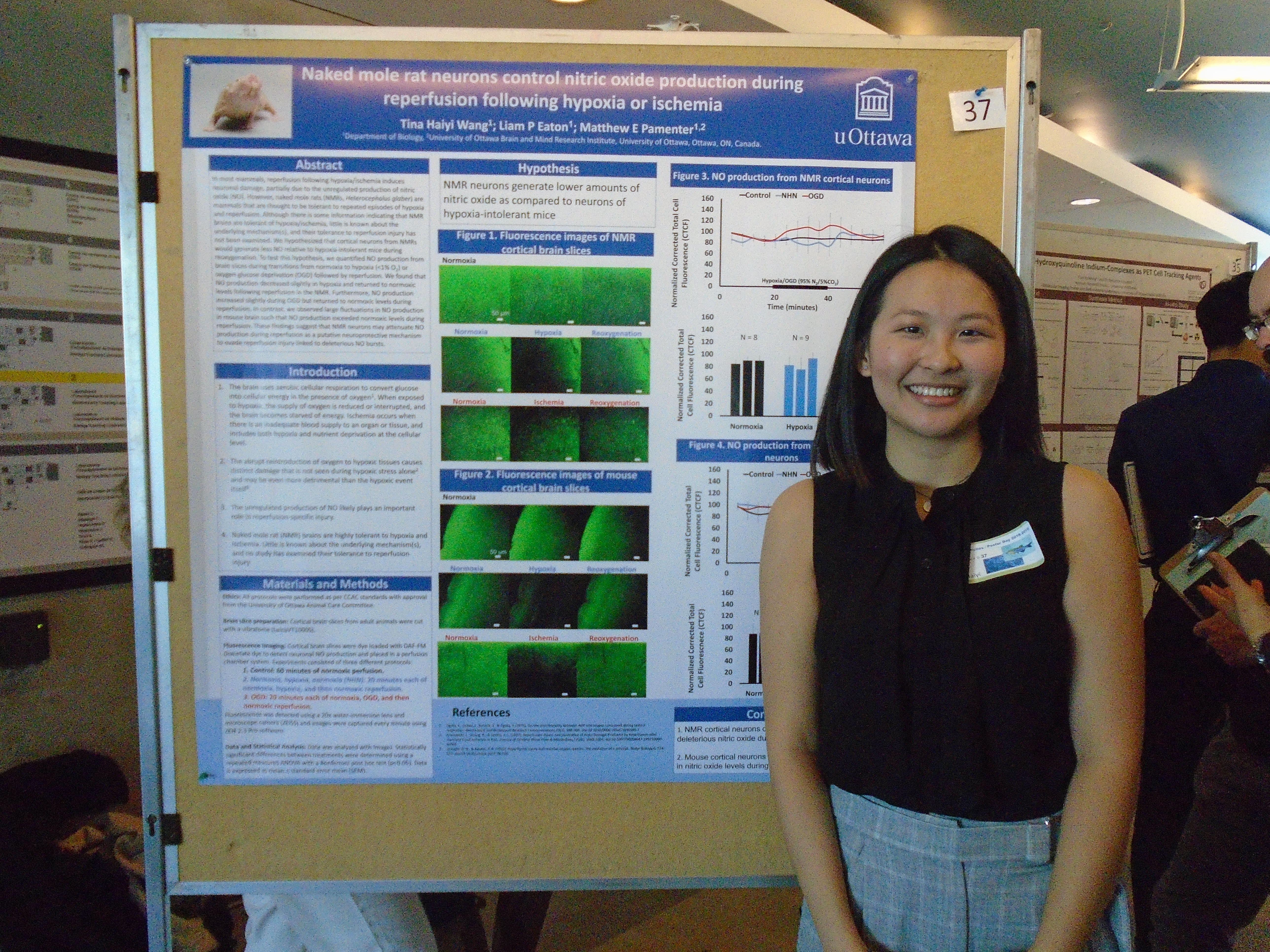
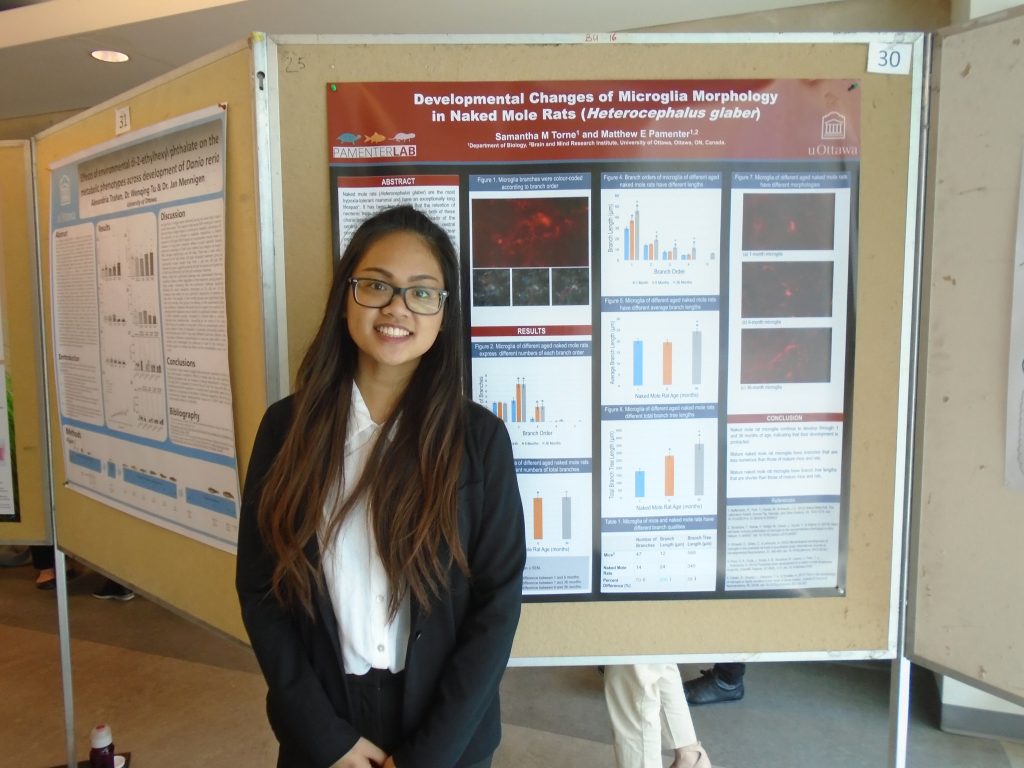
Good job Sarah (II)
Congrats to Sarah for publishing the 2nd paper out of her undergrad studies in our lab: “Fossorial Damaraland mole rats do not exhibit a blunted hypercapnic ventilatory response”, which was accepted today in Biology Letters. Good job!